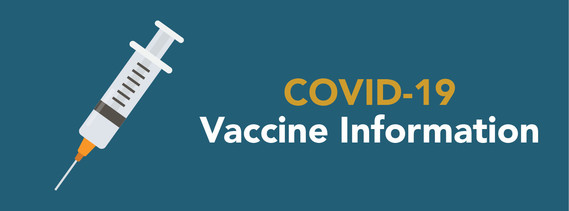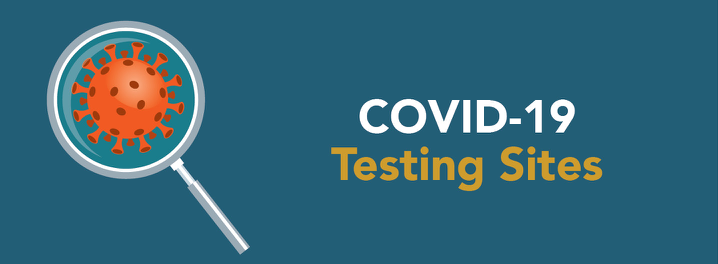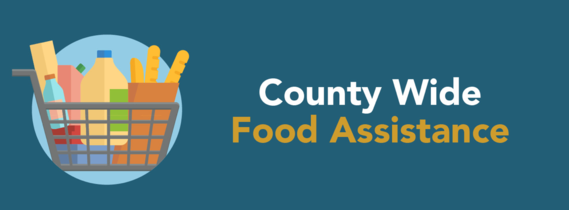Happy Holidays to the residents and businesses of
San Bernardino County!
County Making Steady Progress in Vaccinating Frontline Health
Care Workers
San Bernardino County is progressing smoothly in its efforts to widely administer FDA-approved COVID-19 vaccines from Pfizer-BioNTech and Moderna, with an initial focus on high-risk health workers treating patients on the front lines of the pandemic.
This video shows just a small sampling of the many health care workers receiving the vaccines in medical centers throughout the county.
“We have already provided initial doses to literally thousands of health care workers throughout the county,” said Board of Supervisors Chairman Curt Hagman. “Our top priority is getting the vaccines to doctors, nurses, paramedics, and our other heroes working in hospitals and emergency medical facilities. We expect virtually all of our 112,000 health care providers to receive their first doses within the next few weeks.”
Both vaccines require two doses, 21 days apart for the Pfizer vaccine and 28 days for Moderna, and both have shown to be at least 94% effective at preventing symptomatic cases.
“We are receiving additional supplies of the vaccines every week, and have established a sophisticated system to ensure doses are properly stored and distributed to our partners as quickly and as efficiently as possible,” said Hagman.
The following hospitals and medical centers are vaccinating frontline health care workers:

Getting Help for Your Illness or Injury during the Pandemic
With the coronavirus tightening its grip on the hospital and emergency medical systems, people are often left wondering how to best seek treatment when they become sick or injured. For many, all they know are ambulances and hospital emergency departments. However, those last-resort options represent but a fraction of the full health care system available to the public.
“San Bernardino is similar to other counties throughout the region in its approach to providing health care to its residents and visitors,” said Tom Marshall, Deputy Chief of the San Bernardino County Fire Protection District and Incident Commander of San Bernardino County All-Hazard Incident Management Team #1 (XBO IMT). Primary care providers, physicians, nurse practitioners, and physician assistants are the front line for life-long health care.
“These providers develop relationships with their patients through annual check-ups and management of chronic health conditions. They are also an excellent source for emerging illnesses or minor injuries,” Marshall said. Primary care providers represent the highest concentration of health care providers in the system.
When illnesses or injuries occur outside of normal business hours (or if a patient is traveling), urgent care facilities and health clinics are staffed and equipped to handle these same illnesses and often provide advanced care such as X-rays and wound treatment. While not as robust as the primary care system, the extended hours of urgent care facilities, many of which are open 24 hours a day, are a strong support network for the primary care providers. There are more urgent care beds and providers than emergency department beds in the region.
When your best choice is the ER
For patients with life-threatening illnesses or complex injuries, the emergency department is the destination of choice. This subset of patients can require the assistance of numerous health care workers. Treating one seriously ill or badly injured patient often involves multiple nurses and physicians. Representing the smallest component of the health care system, the emergency department is often the first to be overwhelmed with patients who can treated elsewhere, resulting in wait times that can last several hours.
When the intensive care unit of a hospital is at capacity, the overflow goes to the emergency department (ED) due to the training and capabilities of the ED staff. This also creates a shortage of available beds in the ED. ICU patients held in the ED often require the dedication of an ED nurse who would otherwise be able to manage three patients at once. This lack of beds and staffing creates a backup in the system that cannot be undone as additional patients continue to arrive by ambulance and private vehicle.
Ambulances that arrive at an emergency department with no open beds are forced to wait. This decreases the number of ambulances available for additional 911 calls.
“Many agencies have a standard of arriving on scene of a 911 call in under 10 minutes,” said Nathan Cooke, deputy chief of the Chino Valley Fire District and Deputy Incident Commander of the XBO IMT. “However, the effects of a hospital system stretched to its limits creates a trickle-down effect that threatens the stability of the 911 emergency medical system.”
Consider alternative options
We can find the best care for ourselves and our loved ones by utilizing the full capacity of the health care system. Contact your primary medical provider or nurse advice line for routine medical concerns or to discuss your symptoms. If it’s an urgent situation such as the need for a prescription refill or a minor laceration that may need to be sutured, urgent cares stand ready to help.
Recently, paramedics and EMT’s in San Bernardino County who respond to 911 calls and determine that a patient is stable and not suffering from any life-threatening or life disabling event began educating and referring patients into these alternate avenues of the healthcare system.
“This has resulted in the mutual benefits of ensuring patients receive appropriate care for their current complaint, decreasing the workload of the emergency departments and keeping ambulances available for the critically ill and injured,” Chief Marshall said.
Calling 911 for advice is never appropriate nor shall call-takers provide advice during the call. Seeking ambulance transport to an emergency department for a COVID test or in hopes of receiving the COVID vaccine is likewise inappropriate and serves only to further stress a system that is at its limit.
No one wants to be sick, especially around the holiday season. With the triple threat of colds, flu, and COVID-19, your safest actions remain frequent hand washing, sanitizing commonly touched surfaces, limiting contact with others to essential activities, and wearing a mask when social distancing cannot be maintained. We are all in this together. Help us help you.
County Public Health Officer Shares Importance of Moderna Vaccine
Dr. Michael Sequeira, public health officer for San Bernardino County, shared his personal views in this short video on the importance of the Moderna vaccine. He also gives some insights into the unique advantages of handling this vaccine.
Sheriff Update on Inmates and Employees Testing Positive for COVID
A total of 747 County jail inmates have tested positive for COVID-19. Many of the inmates are only experiencing minor symptoms of the virus. The infected inmates are in isolation, being monitored around the clock, and are being provided with medical treatment. A total of 651 inmates have recovered from the illness.
A total of 686 department employees have tested positive for COVID-19 and are self-isolating at home; 489 employees have recovered from the virus. Other employees are expected to return to work in the next few weeks. It is unknown when or where the employees were infected with the virus. The department continues to encourage all department members to heed the warnings of health officials.
Latest Stats
170,855 Confirmed Cases (up 1.5% from the previous day)
1,407 Deaths (up 1.4% from the previous day)
1,526,935 Tests (up 1.5% from the previous day)
Current Southern California ICU Capacity: 0% (Goal to lift State Stay-at-Home Order: 15%)
For more statistics from the COVID-19 Surveillance Dashboard, click the desktop or mobile
tab on the County’s sbcovid19.com website.




|